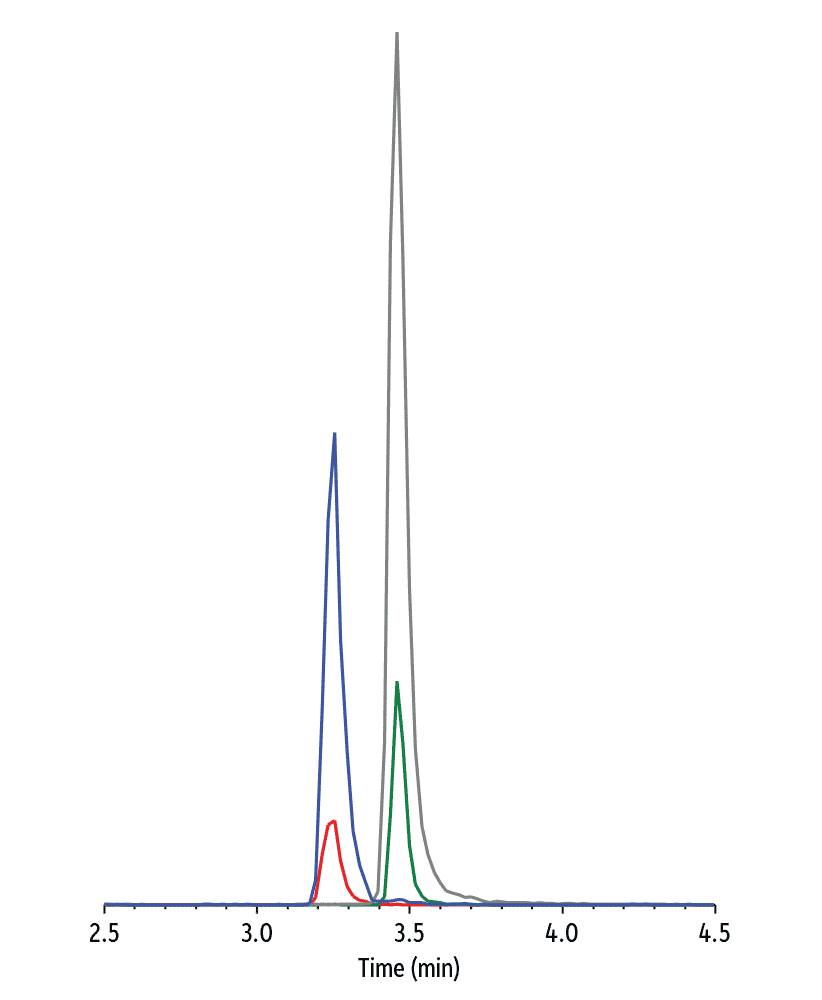- Good retention and peak shape without system contamination from ion-pairing reagents.
- Consistent resolution and response with MS-friendly mobile phases.
- Fast, 7-minute gradient method supports high sample throughput.
Paraquat is a fast-acting, nonselective contact herbicide that is relatively inexpensive. These characteristics have led to its widespread use on agricultural crops in much of the developing world. While paraquat is reasonably safe to apply with proper precautions, accidental or deliberate ingestion has an extremely high fatality rate. Largely for this reason, paraquat has been restricted in many countries. Diquat is a related herbicide that is often formulated with paraquat and is monitored due to its potential toxic effects on the central nervous system. LC-MS/MS analysis of paraquat and diquat in low-moisture food crops, drinking water, and surface water is an important tool for preventing or limiting human and environmental exposure.
Typically, LC-MS/MS analysis of paraquat and diquat involves the use of ion-pairing reagents in order to achieve adequate retention, resolution, and peak shape. However, ion-pairing reagents are known to compete with target analytes for ionization, which typically results in reduced sensitivity. These reagents can also contaminate the LC-MS/MS system, requiring that it be taken off-line frequently for extensive cleaning.
Here, we have developed an LC-MS/MS analysis of paraquat and diquat that does not use ion-pairing reagents, but still provides good retention and peak shape. Both target analytes were fully resolved and showed much greater sensitivity at 50 ng/mL (50 ppb) compared to ion-pairing methods. This fast, 7-minute analysis provided consistent MS results using a 50 mM buffered mobile phase, which is within the buffer salt concentration limits that are generally recommended to minimize contamination and maintenance for LC-MS/MS systems.


